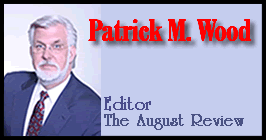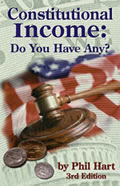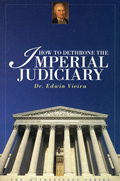Other
Wood
Articles:
Global Cities for Global Corporations
GLOBAL
BANKING: THE BANK FOR INTERNATIONAL SETTLEMENTS
PART 1 of 2
Patrick
Wood
October 19, 2005
NewsWithViews.com
Preface
When David Rockefeller and Zbigniew Brzezinski founded the Trilateral Commission in 1973, the intent was to create a "New International Economic Order" (NIEO). To this end, they brought together 300 elite corporate, political and academic leaders from North America, Japan and Europe.
Few people believed us when we wrote about their nefarious plans back then. Now, we look back and clearly see that they did what they said they were going to do... globalism is upon us like an 8.6 magnitude earthquake.
The question is, "How did they do it?" Keep in mind, they had no public mandate from any country in the world. They didn't have the raw political muscle, especially in democratic countries where voting is allowed. They didn't have global dictatorial powers.
Indeed, how did they do it?
The answer is the Bank for International Settlements (BIS), self-described as the "central bank for central bankers", that controls the vast global banking system with the precision of a Swiss watch.
This report offers a concise summation of BIS history, structure and current activities.
Introduction
The famous currency expert Dr. Franz Pick once stated, "The destiny of the currency is, and always will be, the destiny of a nation."
With the advent of rampant globalization, this concept can certainly be given a global context as well: "The destiny of currencies are, and always will be, the destiny of the world."
Even though the BIS is the oldest international banking operation in the world, it is a low profile organization, shunning all publicity and notoriety. As a result, there is very little critical analysis written about this important financial organization. Further, much of what has been written about it is tainted by its own self-effacing literature.
The BIS can be compared to a stealth bomber. It flies high and fast, is undetected, has a small crew and carries a huge payload. By contrast, however, the bomber answers to a chain of command and must be refueled by outside sources. The BIS, as we shall see, is not accountable to any public authority and operates with complete autonomy and self-sufficiency.
Leading up to Founding
As we will see, the BIS was founded in 1930 during a very troubled time in history. Some knowledge of that history is critical to understanding why the BIS was created, and for whose benefit.
There are three figures that play prominently in the founding of the BIS: Charles G. Dawes, Owen D. Young and Hjalmar Schacht of Germany.
Charles G. Dawes was director of the U.S. Bureau of the Budget in 1921, and served on the Allied Reparations Commission starting in 1923. His latter work on "stabilizing Germany's economy" earned him the Nobel Peace Prize in 1925. After being elected Vice President under President Calvin Coolidge from 1925-1929, and appointed Ambassador to England in 1931, he resumed his personal banking career in 1932 as chairman of the board of the City National Bank and Trust in Chicago, where he remained until his death in 1951.
Owen D Young was an American industrialist. He founded RCA (Radio Corporation of America) in1919 and was its chairman until 1933. He also served as the chairman of General Electric from 1922 until 1939. In 1932, Young sought the democratic presidential nomination, but lost to Franklin Delano Roosevelt.
More on Hjalmar Schacht later.
In the aftermath of World War I and the impending collapse of the German economy and political structure, a plan was needed to rescue and restore Germany, which would also insulate other economies in Europe from being affected adversely.
The Versailles Treaty of 1919 (which officially ended WWI) had imposed a very heavy reparations burden on Germany, which required a repayment schedule of 132 billion gold marks per year. Most historians agree that the economic upheaval caused in Germany by the Versailles Treaty eventually led to Adolph Hitler's rise to power.
In 1924 the Allies appointed a committee of international bankers, led by Charles G. Dawes (and accompanied by J.P. Morgan agent, Owen Young), to develop a plan to get reparations payments back on track. Historian Carroll Quigley noted that the Dawes Plan was "largely a J.P. Morgan production"[1] The plan called for $800 million in foreign loans to be arranged for Germany in order to rebuild its economy.
In 1924, Dawes was chairman of the Allied Committee of Experts, hence, the "Dawes Plan." He was replaced as chairman by Owen Young in 1929, with direct support by J.P. Morgan. The "Young Plan" of 1928 put more teeth into the Dawes Plan, which many viewed as a strategy to subvert virtually all German assets to back a huge mortgage held by the United States bankers.
Neither Dawes nor Young represented anything more than banking interests. After all, WWI was fought by governments using borrowed money made possible by the international banking community. The banks had a vested interest in having those loans repaid!
In 1924, the president of Reichsbank (Germany's central bank at that time) was Hjalmar Schacht. He had already had a prominent role in creating the Dawes Plan, along with German industrialist Fritz Thyssen and other prominent German bankers and industrialists.
The Young Plan was so odious to the Germans that many credit it as a precondition to Hitler's rise to power. Fritz Thyssen, a leading Nazi Industrialist, stated
"I turned to the National socialist party only after I became convinced that the fight against the Young Plan was unavoidable if complete collapse of Germany was to be prevented." [2]
Some historians too quickly credit Owen Young as the idea-man for the Bank for International Settlements. It was actually Hjalmar Schacht who first proposed the idea[3], which was then carried forward by the same group of international bankers who brought us the Dawes and Young Plans.
It is not necessary to jump to conclusions as to the intent of these elite bankers, so we will instead defer to the insight of renowned Georgetown historian, Carroll Quigley:
"The Power of financial capitalism had another far reaching plan, nothing less than to create a world system of financial control in private hands able to dominate the political system of each country and the economy of the world as a whole. This system was to be controlled in a feudalistic fashion by the central banks of the world acting in concert, by secret agreements arrived at in frequent meetings and conferences. The apex of the system was to be the Bank for International Settlements in Basle, Switzerland, a private bank owned and controlled by the world's central banks, which were themselves private corporations. Each central bank, in the hands of men like Montagu Norman of the Bank of England, Benjamin Strong of the New York Federal Reserve Bank, Charles Rist of the Bank of France, and Hjalmar Schacht of the Reichsbank, sought to dominate its government by its ability to control treasury loans, to manipulate foreign exchanges, to influence the level of economic activity in the country, and to influence co-operative politicians by subsequent rewards in the business world."[4] [Bold emphasis added]
So here we have a brief sketch of what led up to the founding of the BIS. Now we can examine the nuts and bolts of how the BIS was actually put together.
The Hague Agreement of 1930
 The
formation of the BIS was agreed upon by its constituent central banks
in the so-called Hague Agreement on January 20, 1930, and was in operation
shortly thereafter. According to the Agreement,
The
formation of the BIS was agreed upon by its constituent central banks
in the so-called Hague Agreement on January 20, 1930, and was in operation
shortly thereafter. According to the Agreement,
The duly authorised representatives of the Governments of Germany, of Belgium, of France, of the United Kingdom of Great Britain and Northern Ireland, of Italy and of Japan of the one part; And the duly authorised representatives of the Government of the Swiss Confederation of the other part Assembled at the Hague Conference in the month of January, 1930, have agreed on the following:
Article 1. Switzerland undertakes to grant to the Bank for International Settlements, without delay, the following Constituent Charter having force of law: not to abrogate this Charter, not to amend or add to it, and not to sanction amendments to the Statutes of the Bank referred to in Paragraph 4 of the Charter otherwise than in agreement with the other signatory Governments.[5]
As we will see, German reparation payments (or lack thereof) had little to do with the founding of the BIS, although this is the weak explanation given since its founding. Of course, Germany would make a single payment to the BIS, which in turn would deposit the funds into the respective central bank accounts of the nations to whom payments were due. (It would be the subject of another paper to show the shallowness of this operation: Money and gold were shuffled around, but the net amount that Germany actually paid was very small.)
The original founding documents of the BIS have little to say about Germany, however, and we can look directly to the BIS itself to see its original purpose:
�The objects of the Bank are: to promote the co-operation of central banks and to provide additional facilities for international operations; and to act as trustees or agent in regard to international financial settlements entrusted to it under agreements with the parties concerned.� [6]
Virtually every in-print reference to the BIS, including their own documents, consistently refer to it as "the central banker's central bank."
So, the BIS was established by an international charter and was headquartered in Basle, Switzerland.
BIS Ownership
According to James C. Baker, pro-BIS author of The Bank for International Settlements: Evolution and Evaluation, "The BIS was formed with funding by the central banks of six nations, Belgium, France, Germany, Italy, Japan, and the United Kingdom. In addition, three private international banks from the United States also assisted in financing the establishment of the BIS."[7]
Each nation's central bank subscribed to 16,000 shares. The U.S. central bank, the Federal Reserve, did not join the BIS, but the three U.S. banks that participated got 16,000 shares each. Thus, U.S. representation at the BIS was three times that of any other nation. Who were these private banks? Not surprisingly, they were J.P. Morgan & Company, First National Bank of New York and First National Bank of Chicago.
On January 8, 2001, an Extraordinary General Meeting of the BIS approved a proposal that restricted ownership of BIS shares to central banks. Some 13.7% of all shares were in private hands at that time, and the repurchase was accomplished with a cash outlay of $724,956,050. The price of $10,000 per share was over twice the book value of $4,850.
It is not certain what the repurchase accomplished. The BIS claimed that it was to correct a conflict of interest between private shareholders and BIS goals, but it offered no specifics. It was not a voting issue, however, because private owners were not allowed to vote their shares.[8]
Sovereignty and Secrecy
It is not surprising that the BIS, its offices, employees, directors and members share an incredible immunity from virtually all regulation, scrutiny and accountability.
In 1931, central bankers and their constituents were fed up with government meddling in world financial affairs. Politicians were viewed mostly with contempt, unless it was one of their own who was the politician. Thus, the BIS offered them a once-and-for-all opportunity to set up the "apex" the way they really wanted it -- private. They demanded these conditions and got what they demanded.
A quick summary of their immunity, explained further below, includes
-
diplomatic immunity for persons and what they carry with them (i.e., diplomatic pouches)
-
no taxation on any transactions, including salaries paid to employees
-
embassy-type immunity for all buildings and/or offices operated by the BIS
-
no oversight or knowledge of operations by any government authority
-
freedom from immigration restrictions
-
freedom to encrypt any and all communications of any sort
-
freedom from any legal jurisdiction[9]
Further, members of the BIS board of directors (for instance, Alan Greenspan) are individually granted special benefits:
-
�immunity from arrest or imprisonment and immunity from seizure of their personal baggage, save in flagrant cases of criminal offence;�
�inviolability of all papers and documents;�
-
�immunity from jurisdiction, even after their mission has been accomplished, for acts carried out in the discharge of their duties, including words spoken and writings;�
-
�exemption for themselves, their spouses and children from any immigration restrictions, from any formalities concerning the registration of aliens and from any obligations relating to national service in Switzerland ;�
-
�the right to use codes in official communications or to receive or send documents or correspondence by means of couriers or diplomatic bags.�[10]
Lastly, all remaining officials and employees of the BIS have the following immunities:
-
�immunity from jurisdiction for acts accomplished in the discharge of their duties, including words spoken and writings, even after such persons have ceased to be Officials of the Bank;�[bold emphasis added]
-
�exemption from all Federal, cantonal and communal taxes on salaries, fees and allowances paid to them by the Bank��
-
exempt from Swiss national obligations, freedom for spouses and family members from immigration restrictions, transfer assets and properties � including internationally � with the same degree of benefit as Officials of other international organizations.[11]
Of course, a corporate charter can say anything it wants to say and still be subject to outside authorities. Nevertheless, these were the immunities practiced and enjoyed from 1930 onward. On February 10, 1987, a more formal acknowledgement called the "Headquarters Agreement" was executed between the BIS and the Swiss Federal Council and basically clarified and reiterated what we already knew:
Article
2
Inviolability
-
The buildings or parts of buildings and surrounding land which, whoever may be the owner thereof, are used for the purposes of the Bank shall be inviolable. No agent of the Swiss public authorities may enter therein without the express consent of the Bank. Only the President, the General Manager of the Bank, or their duly authorised representative shall be competent to waive such inviolability.
-
The archives of the Bank and, in general, all documents and any data media belonging to the Bank or in its possession, shall be inviolable at all times and in all places.
-
The Bank shall exercise supervision of and police power over its premises.
-
The Bank shall enjoy immunity from criminal and administrative jurisdiction, save to the extent that such immunity is formally waived in individual cases by the President, the General Manager of the Bank, or their duly authorised representative.
-
The assets of the Bank may be subject to measures of compulsory execution for enforcing monetary claims. On the other hand, all deposits entrusted to the Bank, all claims against the Bank and the shares issued by the Bank shall, without the prior agreement of the Bank, be immune from seizure or other measures of compulsory execution and sequestration, particularly of attachment within the meaning of Swiss law. [12][bold emphasis added]
|
Subscribe to the NewsWithViews Daily News Alerts! |
As you can see, the BIS, its directors and employees (past and present) can do virtually anything and everything they want, with complete secrecy, immunity and with no one looking over their shoulders. It was truly a banker's dream come true, and it paved the international freeway for the rampant financial globalism that we see manifest today. Don't miss the stunning conclusion! Click on part 2 below.
Click Here For Part-----> 2
Footnotes:
1,
Quigley, Tragedy & Hope, (MacMillan, 1966), p.308
2,
Edgar B Nixon, ec., Franklin D. Roosevelt and Foreign Affairs, Volume
III (Cambridge: Balknap Press, 1969) p. 456
3,
Sutton, Wall Street and the Rise of Hitler, (GSC & Associates, 2002)
p. 26
4,
Quigley, op cit, p. 324
5,
BIS web site, Extracts from the Hague Convention, www.bis.org/about/conv-ex.htm
6,
BIS, Statutes of the Bank for International Settlements Article 3
[as if January 1930, text as amended on March 10,2003], Basic Texts
(Basle, August 2003), p. 7-8
7,
Baker, The Bank for International Settlements: Evolution and Evaluation,
(Quorum, 2002), p. 20
8,
ibid., p. 16
9,
BIS, Protocol Regarding the Immunities of the Bank for International
Settlements, Basic Texts, (Basle, August 2003), p. 33
10,
ibid, Article 12, p.43.
11,
ibid, p. 44
12,
BIS, Extracts from the Headquarters Agreement, www.bis.org/about/hq-ex.htm
� 2005 Patrick Wood -
All Rights Reserved
Patrick M. Wood is editor of The August Review, which builds on his original research with the late Dr. Antony C. Sutton, who was formerly a Senior Fellow at the Hoover Institution for War, Peace and Revolution at Stanford University. Their 1977-1982 newsletter, Trilateral Observer, was the original authoritative critique on the New International Economic Order spearheaded by members of the Trilateral Commission.
Their highly regarded two-volume book, Trilaterals Over Washington, became a standard reference on global elitism. Wood's ongoing work is to build a knowledge center that provides a comprehensive and scholarly source of information on globalism in all its related forms: political, economic and religious.
E-Mail: pwood@augustreview.com
Web Site: www.AugustReview.com
It is not surprising that the BIS, its offices, employees, directors and
members share an incredible immunity from virtually all regulation, scrutiny
and accountability.











